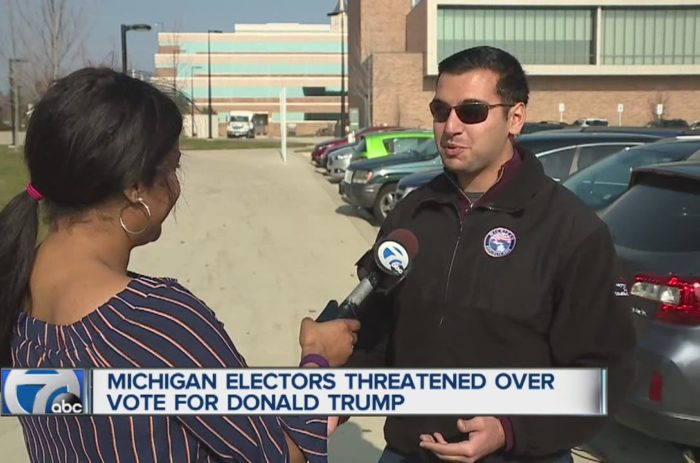The following is an excerpt from OpinionJournal.com’s “Best of the Web” written by the editor, James Taranto.

Health and Human Services Secretary Kathleen Sebelius
The Worst is Yet to Come
The ObamaCare debacle carries the name of the president and the face of Health and Human Services Secretary Kathleen Sebelius, the highest-ranking official subject to congressional oversight. Sebelius was on Capitol Hill again [yesterday], testifying before the Senate Finance Committee. She assured the Democrat-run panel that “repairs are under way on the most serious [technical] problems” afflicting the federal insurance exchange, The Wall Street Journal reports. Such problems, she claimed, number “a couple of hundred.”
The exchange was supposed to be functional at the beginning of October. The administration now promises it will be by the end of November. Sebelius’s assurances strained the credulity even of Chairman Max Baucus, who cast the deciding vote to pass ObamaCare in December 2009. “It has been disappointing to hear members of the administration say they didn’t see problems coming,” Baucus told Sebelius today. “We heard multiple times that everything was on track. We now know that was not the case.” In April Baucus famously told Sebelius “he saw ‘a huge train wreck coming down,’ ” a statement that proved to be an outrageous slander against train wrecks.
The administration’s decision to cut itself two months’ slack raises two questions: Can it keep the new promise, and what happens in December?
There is every reason to doubt the exchange can be made functional in the next 24 days. One reason is that much of the coverage and commentary tends to minimize the seriousness of the challenge by describing the nonfunctional system as a “website.” What’s not working isn’t just the website–the online user interface–but the complicated system that lies behind it. To say HHS needs to fix the “website” is like saying your car needs repairs to its steering wheel and accelerator when in fact the whole engine is junk.
An expert assessment comes from Robert Charette, a technology risk-management consultant, in an interview with Willie Jones of IEEE Spectrum (IEEE is the Institute of Electrical and Electronics Engineers):
Jones: Last week, . . . Sebelius assured her inquisitors at a congressional hearing that her department has brought in experts that have a handle on the problems the site is facing. How confident should we be in Sebelius’ assurances?
Charette: Not very. They’re talking about dozens and dozens of items on their punch list—both in terms of functionality and performance issues. They’ve got just over 30 days to get through the list. Let’s just say that there are 30 items on it. What do you think is the actual probability of getting through testing them, making sure that the system works end to end and that there are no security holes all in a single month? How do you expect to get that done, knowing that every time you make a fix, there’s a high probability that you’re going to introduce an error somewhere else?
Jones: Let’s spin this forward a bit. How do you think this next month will actually go?
Charette: They said that they needed five weeks at the minimum to test it, and they’re still making all these changes. Where will that five-week window fit? If they had stopped right then and tested it for five weeks, they wouldn’t have been able to finish on time. And five weeks was probably the absolute minimum they needed, assuming everything worked. They’re patching the system as they go along and as Sebelius admitted, they’re doing very local unit tests (which, by the way, is what got them into this mess in the first place, with each contractor saying, “Well, my stuff works”). If they discover something major, they may have to run the whole system test again.
Jones: So they’ll most likely gain functionality, but security is not a given.
Charette: Yes, unfortunately. It would be very surprising if there isn’t some type of breach, either at the federal or state level, by this time next year.
That, Charette explains, means that if you find yourself uninsured, you’ll need “to do a personal risk assessment,” balancing the possibility of identity theft against the cost of buying unsubsidized insurance or doing without, paying the mandate tax, and hoping you avoid illness or injury in 2014.
One immediate consequence of ObamaCare has been to multiply the ranks of the imminently uninsured. In addition to most of those who do not have insurance now, they include the millions of victims of the most massive consumer fraud in American history, Barack Obama’s fraudulent promise that “if you like your health plan, you can keep it.” For them, time is running out.
Most of the discussion of ObamaCare deadlines has focused on the deadline for avoiding the mandate tax. The 2014 ObamaCare open enrollment period doesn’t end until March 31, and the mandate tax kicks in only if a taxpayer goes uninsured for three months. But as the Christian Science Monitor explained last month, that made the actual deadline a month and a half earlier:
Most companies start their policies on the first of the month, and so to be covered on March 31, one has to buy insurance that starts on March 1. To get insurance that starts on March 1, one has to sign up by around Feb. 15.
The Obama administration has since extended that deadline, waiving the mandate tax for anyone who signs up for insurance by the end of March, even if that means going without coverage for three or four months.
But wait. If you have to sign up for insurance half a month before your policy becomes effective, then the deadline for an ObamaCare fraud victim whose current policy ends Dec. 31 to avoid a lapse in coverage is around Dec. 15. Even in the unlikely event that HHS fulfills the promise to get the federal exchange working by then, some ObamaCare fraud victims will have barely two weeks to purchase insurance.
In the likely event that Sebelius’s Nov. 30 pledge turns out to be just another vaporware promise, the number of uninsured Americans will start rising on Jan. 1 as the fraud victims’ policies begin to expire. Assessment of the mandate tax against those people–and against those who are currently uninsured and unable to comply with the mandate because of the administration’s technical incompetence–would be difficult to justify either politically or legally.
But we are fast approaching the point where the question of the mandate is a tangential one. Among those who are left without coverage by the ObamaCare fraud and debacle, some will become seriously ill or injured, and others will be unable to get care for pre-existing conditions. At that point ObamaCare will be not just a technical, political and economic disaster but a humanitarian one as well.
For more “Best of the Web” click here and look for the “Best of the Web Today” link in the middle column below “Today’s Columnists.



